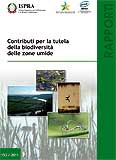Contributions for the protection of the biodiversity of wetlands

This technical report is to present the results of the activities undertaken during the project "Inventory of Italian Wetlands", which started in December 2007 with its first course on the methods adopted by the MedWet (the initiative for the implementation of the Ramsar Convention in the Mediterranean), that is the Pan Mediterranean Wetland Inventory, and pursued in May 2009 with the institution of a technical table on Wetlands, joined by 15 Regions, 2 Provinces, 15 ARPAs, 9 Basin Authorities, the State Forestry Service, 3 National Parks, 9 Regional Protected Areas, Federparchi - Coordination Unit of Riverine Parks, Regional Parks Agency of Lazio, the Health National Institute , ENEA (Research Centres of Saluggia and Casaccia), the CRA - Research Unit for Forest Productions Woody out (PLF), the River Ecology Centre, NGOs (WWF, Legambiente and LIPU), researchers and professors of the University of Parma, Urbino "Carlo Bo”, Rome "La Sapienza" and "Roma Tre", Viterbo "La Tuscia" and L'Aquila. The project was coordinated by ISPRA, Department of Nature Protection (Service NAT-APR), in collaboration with ARPA Tuscany, which is member of the "Scientifical and Technical Team" of MedWet, and the Directorate for the Protection of Nature and the Sea of Ministry for the Environment, Land and Sea.
The activity carried out during the inventory allowed to record a large quantity and variety of data on the distribution of wetlands, their values (biodiversity, ecosystem services, productive activities), their status and the threats addressed to such environments .
Case studies on management and monitoring activities were also collected and the possible integration between the various existing databases (Nature Map, Nature 2000, WISE) was examined, as well as the tools for classification, monitoring and planning required by the European Directives (Habitat, Birds, Water Framework Directive and Marine Strategy). The outlined framework has enabled the definition of several guidelines for the protection of biodiversity depending on inland wetlands and marine-coastal ecosystems, both inside protected areas and in the neighbouring areas , as well as in Natura 2000 sites and Ramsar Sites in line with the guidelines of the National and European Strategy of Biodiversity. Those guidelines are contained in the summary document annexed to the Technical Report.
